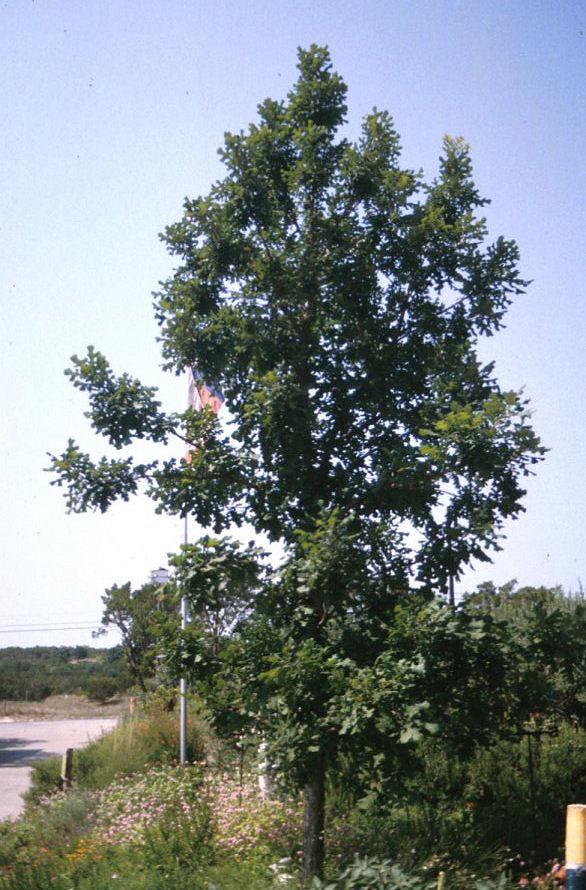| Botanical Name: Quercus macrocarpa | |
| Common Name: Bur Oak, Mossycup Oak |

-
Anatomy
-
Culture
-
Design
Plant Type
Tree
Height Range
40-60', 60-100'
Flower Color
Yellow
Flower Season
Spring
Leaf Color
Green, Dark Green
Bark Color
Brown
Fruit Color
Brown
Fruit Season
Fall, Persistent
Sun
Full
Water
Low
Growth Rate
Slow
Soil Type
Clay, Loam, Rocky
Soil Condition
Average, Rich, Poor, Well-drained, Dry
Soil pH
Neutral, Basic
Adverse Factors
n/a
Design Styles
Formal, Mediterranean, Ranch, Spanish, Woodland
Accenting Features
Fall Color, Silhouette, Specimen
Seasonal Interest
Winter, Summer, Fall
Location Uses
Background, Lawn, Park
Special Uses
Wind Break, Shade Tree
Attracts Wildlife
Birds, Butterflies
Information by: Stephanie Duer
Photographer: JJ Neilson Arboretum
Photographer: JJ Neilson Arboretum
-
Description
-
Notes
Bur oak is a large, deciduous tree somewhat columnar in its youth, but growing broader with age; eventually reaching 50 to 80 feet tall and wide, though it has a slow rate of growth. Its leaves are large, deeply lobed, and dark green above and whitish, slightly furry undersides. Fall color is a yellowish brown. Brown spring catkins are followed by suprisingly small acorns with a mossy cap. The bark is a greyish brown, with older bark having a distinctive flakiness. An absolutely beautiful tree for shade or as a specimen. There is a lovely tree by the science building at Westminster College.
Grow in well-drained, loamy soils in full sun. One of the few oaks that prefers alkaline soils. Drought tolerant. Hardy to USDA Zone 3. Plant the smallest tree you can endure, as it will establish more quickly.